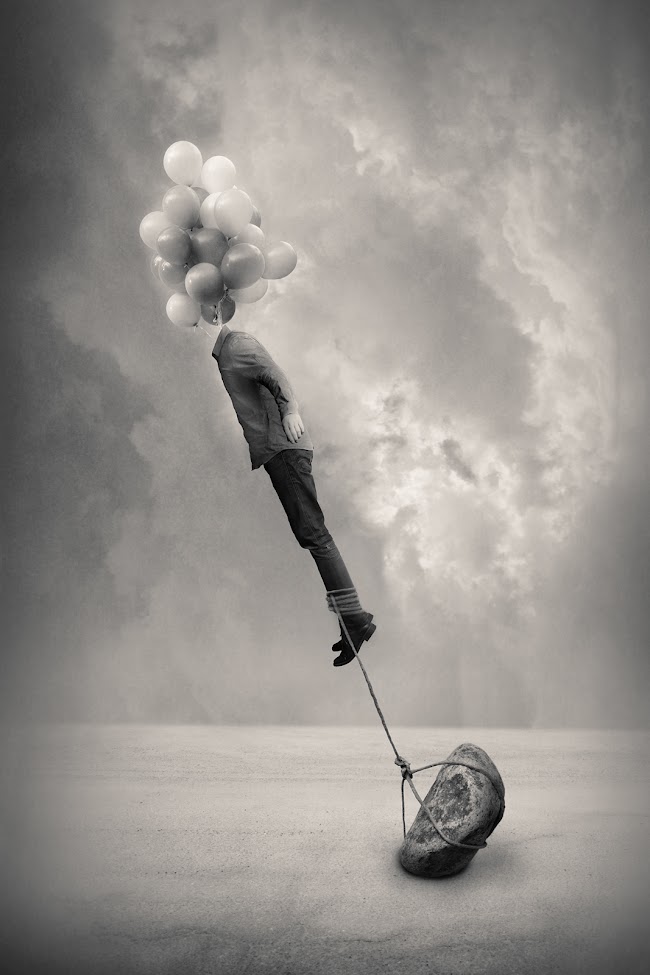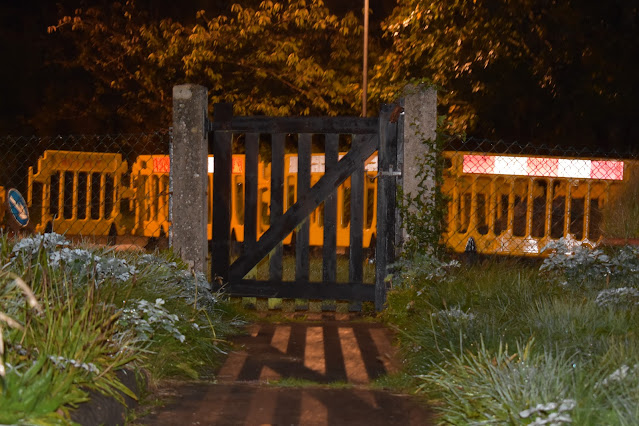Mood Boards
Spangler Recreation
In order to recreate Tyler Spangler's work, I looked at various pieces of his and combined certain ideas, i.e. chromatic aberration, a black and white background image and a cartoony drawn element atop it, this being a photo of my hand drawn over with a cartoonist brush and filled in with various purples, with darker tones for shadows and lighter tones for highlights.
I finished off the standard flat purple colour with a soft gradient to add a slight shadow to it due to it being a part of my art style. I also added custom chromatic aberration behind a rough cutout of myself as I saw that being a theme in Spangler's work, although may not have had enough time in this session to fully explore the idea and execute it properly, although it is only a minor detail here and thankfully does not distract from the main illustrative element.
I am happy with how this piece turned out as I created it on a whim and was originally only planning to create another Dela Deso recreation, yet decided to tackle Tyler Spangler instead to see what I was capable of, and I am proud of what I have achieved. To improve in the future, I plan to use a less detailed, thicker brush, more vibrant and thematic colours, i.e. red, yellow and blue, and to add more detail and focus more on the background photo as well as the foreground elements.
Deso Recreation
Using my old graphics tablet and Photoshop, I was able to produce this recreation of Deso's work and am pleased with how it turned out. Previously, I had used a sharpie, paper and a scanner before deciding the lines were too thick, there was too little detail and the lineart itself distracted from the main piece. The layers for the sharpie lineart and respective colour placeholders remain in the Photoshop file, so I may go back, finish those up and document those at some point to show my progression.
As for the colours themselves, I chose a nice soothing gradient from Photoshop's sample gradients, namely one that started off light at the top and changed both tone and hue as it went down. The eye colours I chose are in reference to one way I drew myself with yellow sclerae with pink blood vessels, dark blue irises increasing in tone as it drew toward the pupil, and, albeit not in this piece, bright pink pupils with an added shine overall. Of course, in this more realistic piece, I did not include that cartoony aspect, although it would be interesting to explore for the other lineart set.
Recreations
My current photography project has similar themes from various different artists and I am excited and inspired to look into them further by recreating their works. One of my first shoots was a recreation of the work of Duane Michaels by taking a series of photos in which a scene gradually changes via the introduction of more props, in this case, various sketchbooks, booklets, office supplies and sheets of paper. These photos were taken in my bedroom using my ceiling light as the lighting. The first photo was taken a while before the rest, so the lighting varies marginally.
The imagery on the screens across from my bed were that of the cover for the album April Fools by The Scary Jokes. I chose to listen to this album as I took this series of photos in order to help influence the vibe I was hoping these images would give off. The album itself has been described as "the best sad clown music", which is akin to what feeling I was hoping to portray in these images.
I took this photo after applying a random setting to the DSLR camera I was borrowing at the time, which turned out to be surprisingly good. The rich, vibrant blues and purples contrasting with the oranges and yellows struck me. The lighting was produced with near similar properties to that of the previous image, with only the television screen producing the harsh light. Overall, this series of images was very fun to produce, and with further adjustments, I could see the latter two fitting into the Crewdson aesthetic, i.e. further-distanced shots, different lighting, different camera settings, further Photoshop adjustments, et cetera. However, I am happy with it as it is.
Surreal Project Planning Continued
Going into my second year at college, I have decided to attempt to create—or recreate—surreal artwork via the use of various art programs, such as Photoshop, PaintNET and FireAlpaca. I will be able to use both FireAlpaca and, to a much greater extent due to plugins, PaintNET at home. Currently, I will be producing preliminary sketches of my ideas of what I plan to create. This is all subject to change.

Returning to the more Dali-esque side of surrealism—where it is not weird for the sake of being weird, but rather having meaning and structure behind it, with symbolism and pragmatic, thought-provoking visual elements—I have taken to a list of surreal photographs with ‘unknown’ artists, with this piece catching my eye.
I wanted to find similar pieces after I had discovered a piece identical to this one, with a pipe instead of an egg, so I found this image on the list, saved it, reverse-image searched it and found it again on Google Images with a link to a Pinterest page, which then linked to a DeviantArt page, this thankfully being the actual artist’s page. The artist behind this piece is a Turkish DA-based woman named Aksam Gunesi, pseudonomically known as beyzayildirim77, and she creates tons of fascinating, obscure pieces, including variations—a series—of pieces akin to this one, with various other objects / food items in place of the egg, i.e. an apple or a roll of sushi.
If I am to draw inspiration from this artist, it may be the majority of my surreal pieces going into my second year, as this is essentially the ideal structure of what I wish to produce; a very clear and concise piece with a less-is-more feeling to it, akin to what Dali created.

My choices for each artist is simple; they all have vastly different and unique styles that are relatively easy to recreate, for which I will detail in a list below alongside my illustrated and annotated shoot plans.
My plan to recreate Kent's artwork is to cut out various letters and shapes, with large ones being cut with scissors and small ones being cut with a carving knife. That sheet used to cut them out will then be laid over another sheet, on which I will colour using either markers or paints, likely the latter due to less waste of materials, even if I don't use my markers. It will also take less time, have more texture and be closer to replicating Kent's style, and likely also turn out better in the photos. This is also akin to my work in secondary school photography, where I painted on a sheet of paper and photographed it for use in a series of photos.
Mentis Imperium, et Lunam, et Pastor
The final stretch of my surreal photography project was not as ambitious as I had hoped, but on the brighter side I got to convey a differ...

-
This mood board consists of the artists who I am basing my work upon. Seen above is the work of Storm Thorgerson, Duane Michaels, Gregory C...
-
The plan for my photography course involves working harder in the appropriate environment for me to produce pieces in my chosen theme. Worki...
-
In order to recreate Tyler Spangler's work, I looked at various pieces of his and combined certain ideas, i.e. chromatic aberration, a b...







































